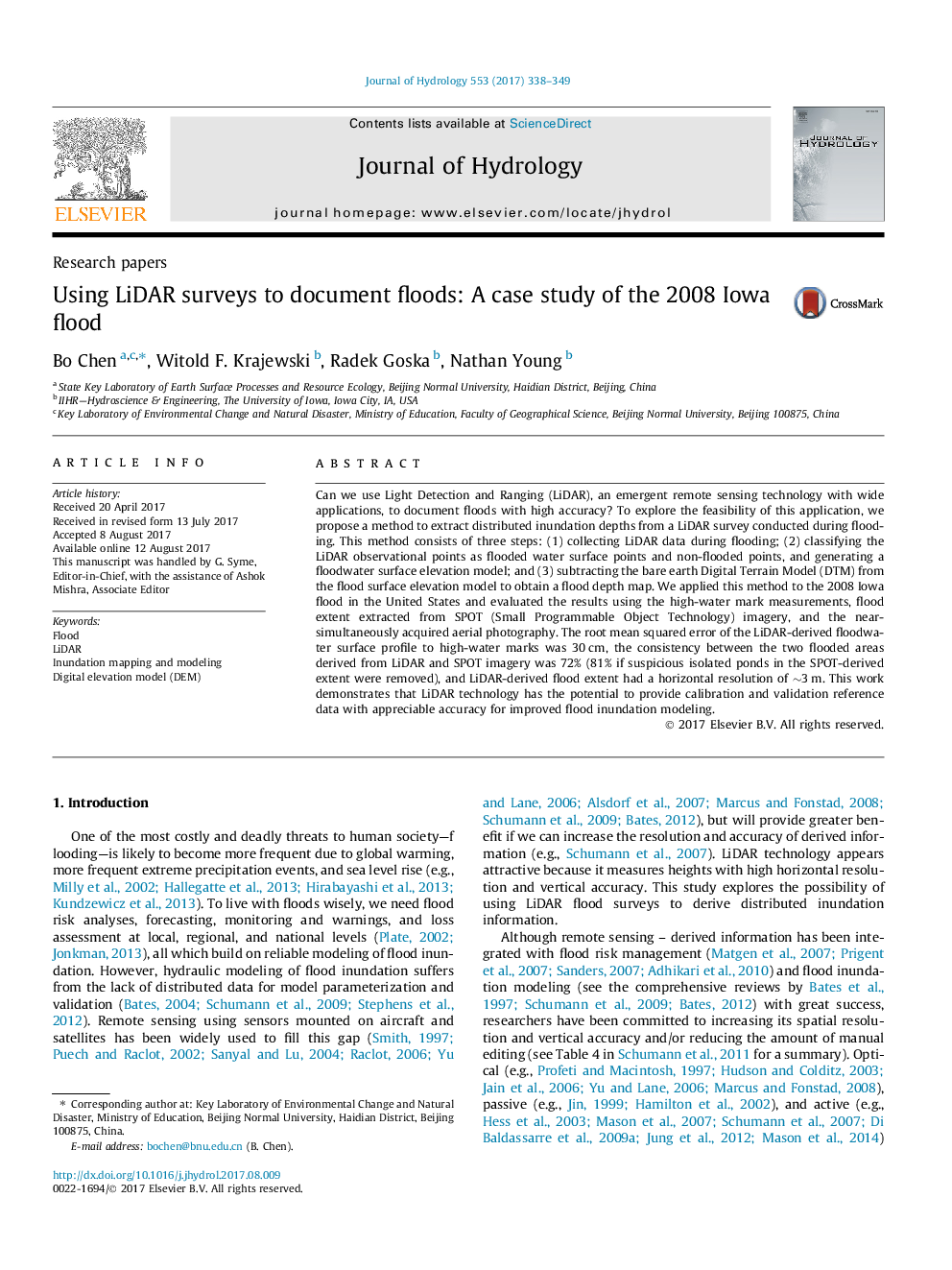| Article ID | Journal | Published Year | Pages | File Type |
|---|---|---|---|---|
| 5770821 | Journal of Hydrology | 2017 | 12 Pages |
â¢LiDAR surveys were conducted for the Iowa River during the 2008 Iowa flood in the US.â¢This huge data set was processed automatically to retrieve flood inundation maps.â¢Assessment shows the LiDAR-derived flood information has appreciable accuracy and resolution.â¢LiDAR has the potential be an alternative remote sensing method to document floods.
Can we use Light Detection and Ranging (LiDAR), an emergent remote sensing technology with wide applications, to document floods with high accuracy? To explore the feasibility of this application, we propose a method to extract distributed inundation depths from a LiDAR survey conducted during flooding. This method consists of three steps: (1) collecting LiDAR data during flooding; (2) classifying the LiDAR observational points as flooded water surface points and non-flooded points, and generating a floodwater surface elevation model; and (3) subtracting the bare earth Digital Terrain Model (DTM) from the flood surface elevation model to obtain a flood depth map. We applied this method to the 2008 Iowa flood in the United States and evaluated the results using the high-water mark measurements, flood extent extracted from SPOT (Small Programmable Object Technology) imagery, and the near-simultaneously acquired aerial photography. The root mean squared error of the LiDAR-derived floodwater surface profile to high-water marks was 30Â cm, the consistency between the two flooded areas derived from LiDAR and SPOT imagery was 72% (81% if suspicious isolated ponds in the SPOT-derived extent were removed), and LiDAR-derived flood extent had a horizontal resolution of â¼3Â m. This work demonstrates that LiDAR technology has the potential to provide calibration and validation reference data with appreciable accuracy for improved flood inundation modeling.
